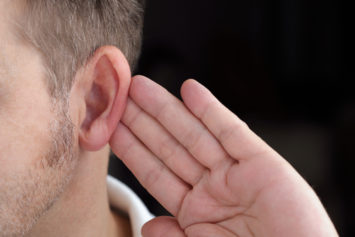Medications could one day prevent noise-induced hearing loss, according to the National Institute for Occupational Safety and Health (NIOSH). NIOSH researchers recently contributed articles for a special issue of the Journal of the Acoustical Society of America exploring the potential for “otoprotective” pharmaceuticals to protect ears from noise damage.

The special issue, “Noise-Induced Hearing Loss: Translating Risk from Animal Models to Real-World Environment,” examines topics related to the development of such drugs to prevent hearing loss.
The challenges that researchers face include the following:
- There has been little effort to develop animal models that accurately represent the exposure hazards seen across human populations;
- There is little understanding of which human populations could benefit from pharmaceutical intervention or whether such intervention is appropriate; and
- There is no clear path yet for starting clinical trials of drugs that might prevent noise-induced hearing loss.
The Journal accepted six papers submitted by NIOSH researchers. Members of NIOSH’s Division of Field Studies and Engineering in Cincinnati, Ohio, contributed an introduction summarizing the facts about noise-induced hearing loss and the potential to use animal models and animal data to understand human hearing loss and prevention in various environments. They also provided a review of existing research into occupational noise exposure—its effects, epidemiology, and impact—with recommendations for reducing its burden.
NIOSH also published surveys of firearm noise exposures in the military, looking at both indoor and outdoor firing ranges.
Noise-induced hearing loss is a common injury for servicemembers and civilians, according to the Institute. It is one of the most common injuries for servicemembers and one of the most common disabilities among veterans.
It can have a negative impact on the quality of life for affected individuals; and the cost of rehabilitation, usually through the use of hearing aids, is significant.
While researchers know there are risks posed by recreational and nonoccupational noise exposures—the use of personal audio systems and exposure to amplified music in bars, clubs, and concerts—the relationship between occupational and nonoccupational hearing loss is poorly understood.
More research is needed.
The special issue looks at three broad areas of current research and potential for research and development of pharmaceuticals:
- The animal models that have been used so far in preclinical drug development paradigms—animals already studied include chinchillas, guinea pigs, mice, and rats;
- Real-world noise hazards and patterns of human injury; and
- An examination of various noise sources that could suggest the most appropriate ways to proceed with clinical testing and development of drugs.
Exposure to hazardous noise is one of the most common workplace risks in the United States and worldwide. Repeated overexposure to noise at or above 85 decibels can cause permanent hearing loss, tinnitus, and difficulty understanding speech in noise.
Noise exposure also has been associated with balance problems, cardiovascular disease, and depression.
While there are noise-exposed workers in every sector, and every sector has workers with hearing loss, the construction, manufacturing, and mining sectors typically have the highest prevalence of noise exposure and hearing loss.
The most common approach to preventing noise-induced hearing loss is hearing protection. Effective prevention using drugs could reduce the prevalence of noise-induced hearing loss.
